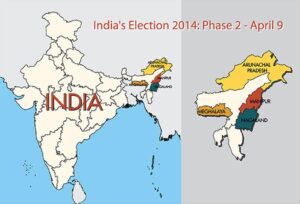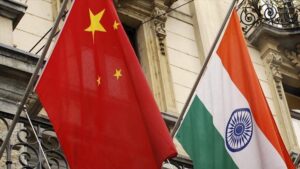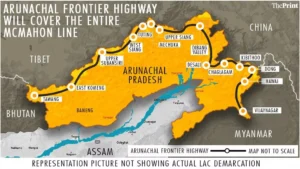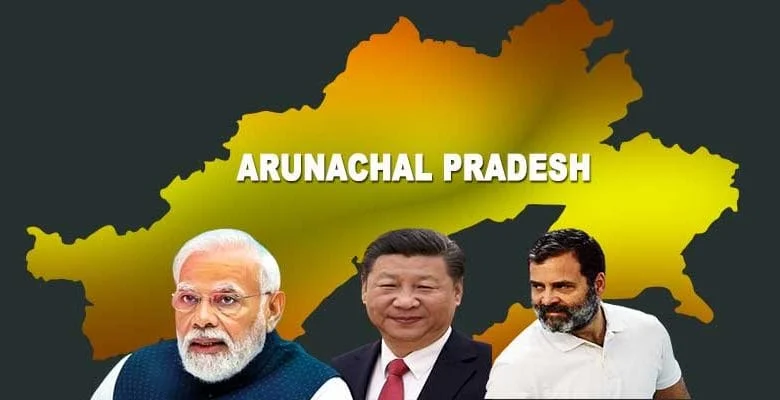Arunachal Pradesh 2025: Development Amid Diplomatic Disputes and Strategic Assertion

FOR FURTHER VISIT: NEWSORGAMES
Fresh row over Arunachal Pradesh state erupts between India, China
Beijing issues new names of many places in India’s northeastern Arunachal Pradesh state, which China call as Zangnan
India and China have counterclaims in the northeastern Arunachal Pradesh state of the South Asian nation. Arunachal Pradesh is known as Zangnan in China, with Beijing stating it has “never recognized the so-called Arunachal Pradesh.”
“Consistent with our principled position, we reject such attempts categorically,” the spokesman said, adding: “Creative naming will not alter the undeniable reality that Arunachal Pradesh was, is, and will always remain an integral and inalienable part of India.”
New Delhi’s statement came after China’s Civil Affairs Ministry published its latest names for some 27 places in Arunachal Pradesh, which covers 15 mountains, five residential areas, four mountain passes, two rivers, and one lake.
However, Beijing said: “Zangnan is China’s territory,” state media reported.
China considers the contested areas as “part” of its southern Tibetan autonomous region, which Beijing calls Xizang.
“Chinese government has standardized the names of some places in Zangnan, which is entirely within the scope of China’s sovereignty,” Foreign Ministry spokesman Lin Jian told reporters in Beijing.
FOR FURTHER VISIT: NEWSORGAMES
Diplomatic Tensions: China’s Claims on Indian Territory

FOR FURTHER VISIT: NEWSORGAMES
China has long claimed Arunachal Pradesh as part of its territory, referring to it as “South Tibet.” In 2023, the Chinese Ministry of Civil Affairs released a list renaming 11 places in Arunachal Pradesh, a move condemned widely by the Indian government. This attempt to assert sovereignty through cartographic aggression continued into 2024 and early 2025, as Beijing reiterated its claims during bilateral meetings and international forums.
Responding firmly, the Indian Ministry of External Affairs stated:
“Arunachal Pradesh was, is, and will always remain an integral and inalienable part of India. Assigning invented names does not alter this reality.” — Ministry of External Affairs spokesperson, April 2024
India’s diplomatic and military establishment has underscored that it will not tolerate any attempts to undermine its territorial integrity. These provocations are widely seen as part of a broader Chinese strategy of “salami slicing,” wherein gradual steps are taken to assert control or pressure neighboring countries.
Strategic Assertion Through Governance and Presence

FOR FURTHER VISIT: NEWSORGAMES
In a strong symbolic move, Arunachal Chief Minister Pema Khandu held a cabinet meeting at Kibithu, one of the easternmost outposts along the Indo-China border. This unprecedented decision was a message of governance, not from distant capitals, but from the very edge of India’s frontline territory.
“Our presence here today is proof that the Indian government governs even the most remote parts of its land with pride and responsibility.” — CM Pema Khandu, April 2025 at Kibithu
The Indian Army has also increased its presence along the Line of Actual Control (LAC), with more infrastructure being developed to support troop movement and defense logistics. The inauguration of the Sela Tunnel has enabled all-weather connectivity between Tawang and Guwahati, crucial for both civilian access and military operations.
Countering Chinese Influence with Infrastructure and Identity

The Indian government’s approach includes not just military preparedness but socio-economic empowerment of its border populations. By investing heavily in roads, schools, healthcare, and renewable energy projects in Arunachal Pradesh, New Delhi is strengthening its grassroots sovereignty. The recent approval of hydroelectric projects worth thousands of crores, as well as a renewed focus on cultural preservation, speaks to this holistic strategy.
Additionally, the “Vibrant Villages Programme”, launched in 2023, continues to develop border villages like Chayangtajo, Taksing, and Tuting — all near the LAC — making them self-sufficient and connected. These villages are being turned into models of sustainable development, deterring migration and asserting India’s administrative control.
“China’s aggression is not new. But our response today is multidimensional — from building roads to building communities.”
— Rajnath Singh, Defence Minister of India, December 2024
International Engagement and Backing
While bilateral relations between India and China remain tense, New Delhi has increased its diplomatic outreach to counter Beijing’s narratives. At multiple summits — including the G20 and Quad — India has received support for its territorial sovereignty, especially after China’s repeated attempts to block or rename Indian sites on international maps.
In response to China’s attempts to prevent foreign dignitaries from visiting Arunachal Pradesh, India invited the US Ambassador to India to Tawang, as a demonstration of transparency and international recognition.
“India’s stand on Arunachal Pradesh is unwavering, and global democracies recognize this. It is a part of India — culturally, constitutionally, and emotionally.”
— Dr. S. Jaishankar, Minister of External Affairs, March 2025
Conclusion: Resilience in the Face of Provocation
In 2025, Arunachal Pradesh exemplifies a region that is asserting its identity — not just through political rhetoric, but through inclusive development, education reform, infrastructure, tourism, and civic empowerment. China’s continued provocations may seek to unsettle, but India’s multi-tiered approach — combining diplomacy, defense, and development — is ensuring that Arunachal Pradesh remains an undeniable part of its sovereign narrative.
The message is clear: Arunachal is not just a border state — it is a cornerstone of India’s unity and pride


Leave a Reply